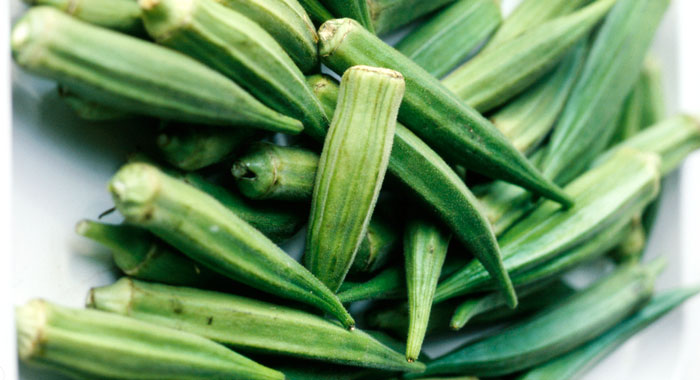
Pronounce it: oh-kra
Originally from Africa, okra is now widely used in cuisines such as Caribbean, Creole, Cajun and Indian. It’s also known as bhindi or lady’s fingers, in reference to the long, elegantly tapering shape.
Ridged along its length, the green, slightly fuzzy pod contains rows of edible seeds that release a mucilaginous (sticky, viscous) liquid when chopped and cooked, which has led to it being used to thicken soup and stew recipes, such as Cajun gumbo, but it’s also served whole as a side dish.
Its flavour is quite subtle, so it benefits from being cooked with strong, spicy ingredients.
Availability
All year round.
Choose the best
Look for firm, brightly coloured pods. Avoid those that are limp or which have brown marks – they won’t be so fresh. The bigger they are, the tougher they are; around 7-10cm is best.
Prepare it
Wash and dry. If you are serving the okra whole as a side dish, and don’t want the liquid to be released during the cooking, trim around the stalks in a cone shape, so that the pod isn’t pierced.
Soaking the whole pods in acidulated water for an hour can also help eliminate some of their liquid. If you do want to release the liquid, so that it can thicken a stew or soup, chop or slice thickly or thinly, according to your recipe.
Store it
In a perforated bag in the fridge; they will keep for a few days.
Cook it
Stir-fry, chopped or whole (6-12 minutes); steam whole (5 minutes); grill whole (2-3 minutes each side); chop and add to soups, stews and casseroles.
Be the first to comment on "Okra"